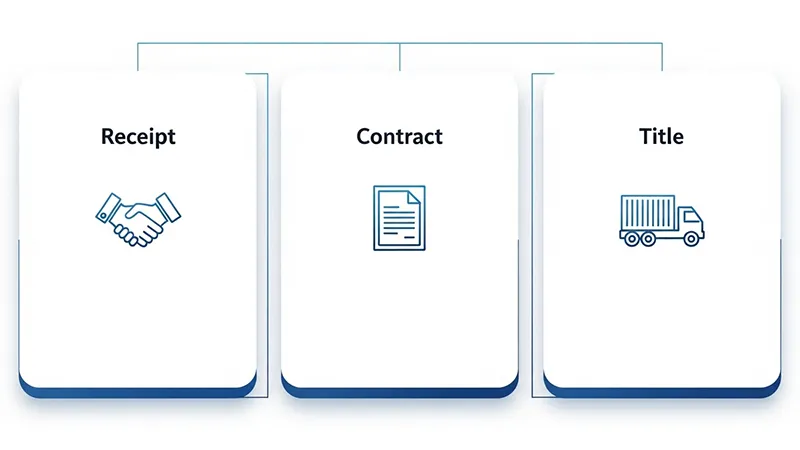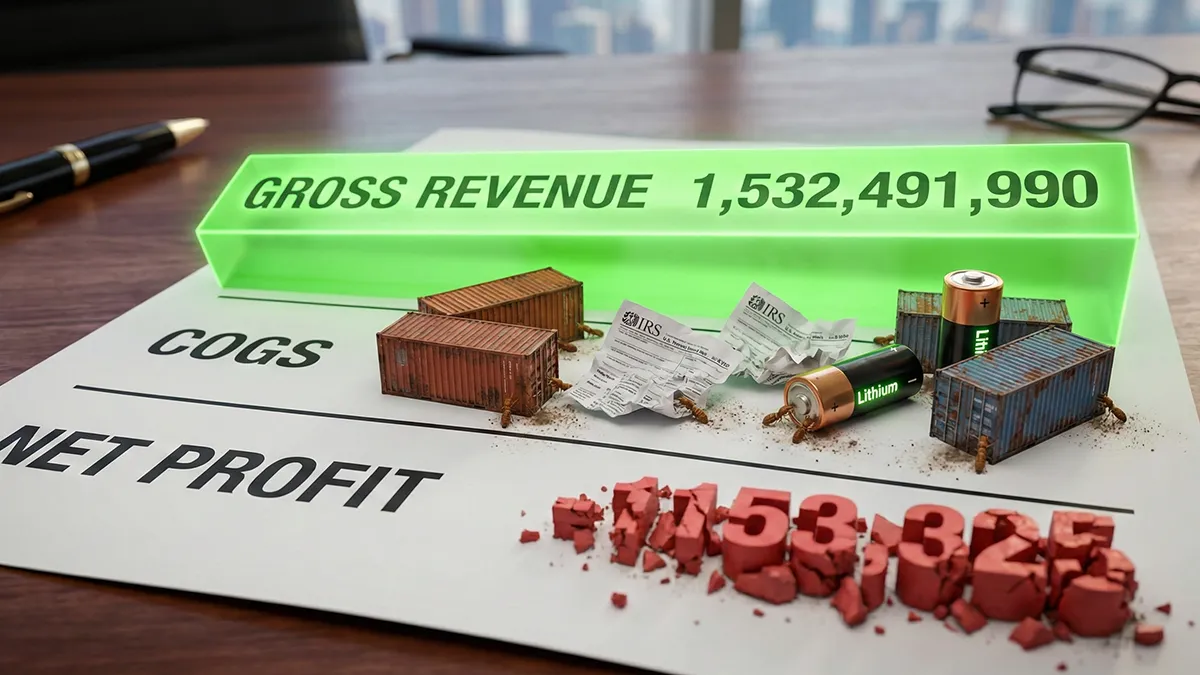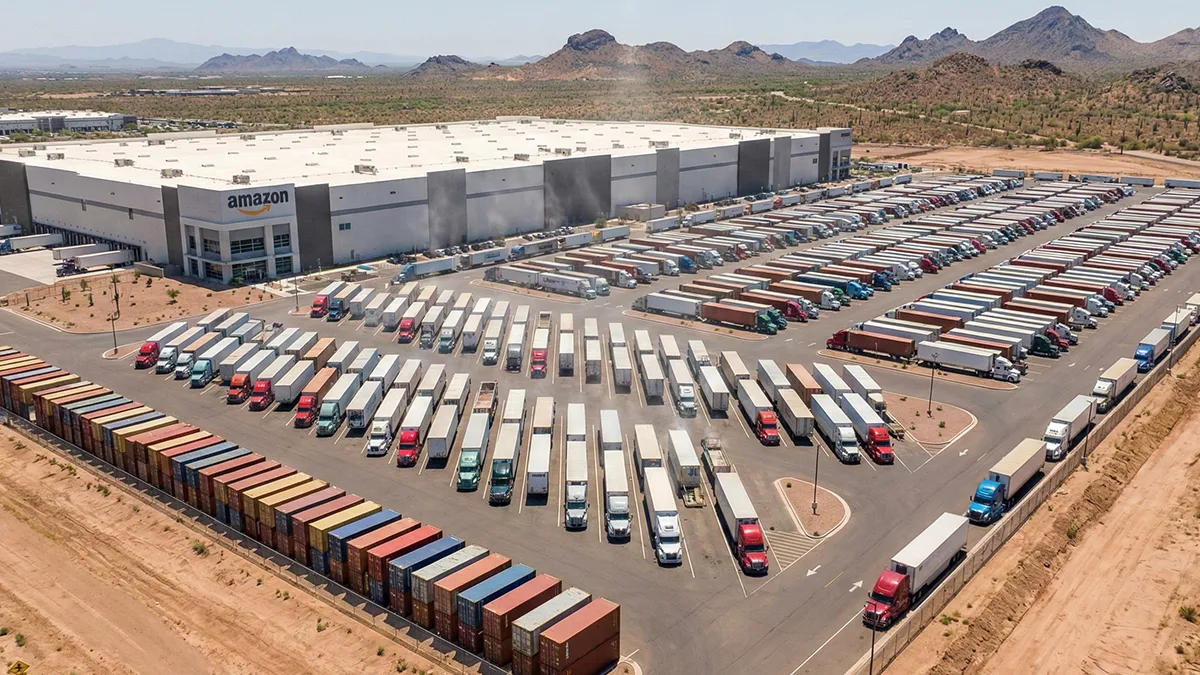Bill of Lading: Meaning, Types, Example, and Purpose
A Bill of Lading (B/L) is a legal document that serves three essential purposes in global trade — it acts as a receipt, a contract of carriage, and a document of title between the shipper and the carrier. No international shipment can be released or cleared through customs without it.
What Is a Bill of Lading and Why It Matters

A Bill of Lading is the cornerstone of global logistics. It confirms that the carrier has received the goods, defines the contract between shipper and carrier, and identifies the rightful owner of the cargo during transit.
At Zbao Logistics, we manage hundreds of shipments weekly from China to the USA, Canada, the UK, and the EU, and every single one requires a correctly issued Bill of Lading. Without it, customs authorities can’t verify ownership, and banks cannot release payments under Letters of Credit.
Think of the Bill of Lading as your cargo’s passport — it proves that your goods exist, are in motion, and belong to you.
The three key functions of a Bill of Lading are:
-
Receipt: It confirms that the carrier has received the goods in apparent good condition.
-
Contract: It details the agreed transport terms between the shipper and carrier.
-
Title: It establishes ownership rights and allows the holder to claim the goods upon arrival.
Because it’s recognized under maritime law and by the International Chamber of Commerce (ICC), a Bill of Lading is the ultimate proof of ownership and a critical document for dispute resolution, insurance, and customs compliance.
Purpose and Importance in International Shipping
The Bill of Lading connects everyone involved in global trade — shippers, freight forwarders, carriers, consignees, and customs authorities — under one unified agreement.
For importers, it’s crucial because it determines:
-
Customs clearance: Customs officers match the B/L data with the commercial invoice and packing list.
-
Payment control: Banks require the original B/L to release payments under trade finance or L/C terms.
-
Cargo release: The consignee must present the correct B/L to take delivery from the carrier or forwarder.
At Zbao Logistics, our documentation specialists verify every B/L before vessel departure to prevent common mistakes like mismatched consignee names, wrong Incoterms (DDP vs. FOB), or missing HS codes.
Learn how we handle full documentation for our clients through our Customs Clearance Service
Types of Bill of Lading (Complete Matrix)
There are multiple types of Bills of Lading depending on the transport mode, legal transferability, issuing party, and release method. Below is the complete overview.
1. By Transport Mode
-
Ocean Bill of Lading (OBL): Used for sea freight. The most common in China’s export logistics.
-
Air Waybill (AWB): Used for air freight; non-negotiable.
-
Multimodal B/L: Covers combined transport (e.g., truck + sea + rail).
2. By Transferability
-
Straight B/L: Non-negotiable; cargo can only be delivered to the consignee named.
-
Order B/L: Negotiable; allows ownership transfer through endorsement, often used with Letters of Credit.
-
Bearer B/L: Fully negotiable; whoever holds it owns the goods (rare due to fraud risk).
3. By Issuing Party
-
House Bill of Lading (HBL): Issued by a freight forwarder such as Zbao Logistics, showing the actual shipper and buyer.
-
Master Bill of Lading (MBL): Issued by the carrier (e.g., COSCO, Maersk, MSC) and represents the forwarder-to-carrier contract.
| Comparison: House vs. Master Bill of Lading | House B/L (HBL) | Master B/L (MBL) |
|---|---|---|
| Issued by | Freight forwarder | Carrier or shipping line |
| Shows | Actual shipper & consignee | Forwarder & overseas agent |
| Used for | LCL / FCL under forwarder’s control | Contract with carrier |
| Amendments | Easier and faster | Must follow carrier policy |
| Example | Issued by Zbao Logistics | Issued by COSCO or MSC |
4. By Release Method
-
Original B/L: Traditional paper set (usually 3 originals).
-
Telex Release: Digital release; cargo can be claimed electronically once originals are surrendered.
-
Seaway Bill: Simplified, non-negotiable version — automatically releases to a pre-identified consignee.
-
Switch B/L: Reissued B/L where the exporter or origin data needs to be changed for confidentiality or re-export.
For Amazon FBA shipments or multi-supplier consolidation, understanding these release types is essential.
Discover how we handle these processes within our DDP Shipping Service.
Example of a Bill of Lading (Explained Line-by-Line)

Case Study: Shenzhen → Los Angeles Electronics Shipment
A U.S. retailer orders 20 cartons of Bluetooth speakers and 15 pallets of LED lights from two factories in Shenzhen.
Our team consolidates the goods at our Shenzhen warehouse, books sea freight, and issues a House Bill of Lading (HBL) once the cargo is loaded.
A standard B/L includes:
-
Shipper: Shenzhen Bright Audio Co., Ltd.
-
Consignee: ABC Imports LLC, Los Angeles
-
Notify Party: Same as consignee or FBA address
-
Vessel & Voyage: COSCO Harmony V.092E
-
Port of Loading: Yantian, China
-
Port of Discharge: Los Angeles, USA
-
Cargo Description: 20 cartons Bluetooth speakers; 15 pallets LED lights
-
Freight Terms: DDP (Delivered Duty Paid)
-
Gross Weight: 3,250 kg
-
Measurement: 5.8 CBM
Once approved, we issue the final B/L and send a Telex Release before vessel arrival. At destination, the consignee uses it to claim cargo, prove ownership to customs, and complete payment.
How the Bill of Lading Process Works (Step-by-Step)

1️⃣ Booking & Shipping Instruction (SI) — Once shipment details are confirmed, we prepare the SI listing shipper, consignee, cargo description, and Incoterms.
2️⃣ Cargo Loading & Carrier Confirmation — After loading, the carrier assigns the B/L number.
3️⃣ Draft Review — We share a draft for client review before vessel departure.
4️⃣ Final Issuance — The B/L is issued (Original, Telex, or eBOL).
5️⃣ Arrival & Release — Our destination agent clears the cargo with the B/L.
Verify customs requirements with U.S. Customs and Border Protection (CBP)
Common Mistakes and Risk-Control Checklist
Even experienced shippers make documentation mistakes. Here are the most frequent — and how we prevent them:
-
Incorrect Consignee / Notify Party – Blocks release at destination.
-
Weight / CBM Mismatch – Causes customs re-inspection or demurrage.
-
Typo in Cargo Name or HS Code – Creates declaration inconsistencies.
-
Wrong Incoterms (FOB vs. DDP) – Shifts tax or insurance responsibilities.
-
Late Draft Approval – Vessel departs before confirmation, leading to amendment fees.
At Zbao Logistics, every Bill of Lading undergoes dual verification before the carrier’s cutoff. Our document control team ensures consistency across all commercial documents and confirms consignee data with overseas agents.
We also train eCommerce and Amazon FBA clients on compliance with labeling, documentation, and customs standards — reducing delays and penalties.
The Rise of the Electronic Bill of Lading (eBOL)
The Electronic Bill of Lading (eBOL) represents the next stage of logistics efficiency. By digitizing B/L documents through secure online systems or blockchain technology, the global shipping industry gains speed and transparency.
Key benefits include:
-
Faster document transfer and cargo release
-
Lower administrative cost and zero courier delays
-
Enhanced traceability and security
-
Paperless, sustainable operations
Organizations like the ICC and NMFTA are leading the adoption of legally recognized eBOL standards.
At Zbao Logistics, we already provide hybrid solutions — digital Telex Release and eBOL for shipments from China to the USA, Canada, UK, and EU — ensuring faster release and simplified communication.
Zbao Logistics Workflow: From Draft to Delivery
Our internal workflow ensures precision at every stage:
-
Pre-Shipment Verification: Confirm supplier and consignee details before booking.
-
Document Alignment: Match invoice, packing list, and customs declaration data.
-
Draft Review: Send to the client for approval before sailing.
-
Final Release & Clearance: Coordinate Telex Release and destination customs filing.
-
Post-Shipment Archiving: Securely store all files for audits or claims.
Our systemized process helps clients avoid B/L discrepancies, reduce clearance delays, and maintain full visibility from loading to final delivery.
Read how this helped one U.S. importer in our Amazon FBA shipment case study
Frequently Asked Questions (FAQ)
1️⃣ What’s the difference between a Telex Release and a Seaway Bill?
A Telex Release confirms the shipper has surrendered all Original B/Ls so the consignee can claim goods electronically.
A Seaway Bill is non-negotiable and acts as a receipt only — no surrender required.
2️⃣ Who issues the Bill of Lading — the carrier or the forwarder?
Both. Carriers issue the Master B/L, while freight forwarders like Zbao issue the House B/L listing the actual shipper and consignee.
3️⃣ Can I ship without an Original B/L?
Yes — Telex Release and Seaway Bill allow cargo release without physical documents. Most DDP shipments from China now use these digital methods.
4️⃣ What if my supplier refuses to release the B/L?
This typically happens when payment is pending. Always confirm your Incoterms (FOB, CIF, DDP) and ensure mutual release conditions before booking.
5️⃣ How can I verify my Bill of Lading before customs clearance?
Cross-check it against your invoice and packing list. For professional verification, reach out to our documentation team anytime.
Conclusion — Why the Bill of Lading Matters
The Bill of Lading is the backbone of every international shipment — defining ownership, confirming cargo receipt, and enabling customs clearance.
Without it, global trade simply doesn’t move.
At Zbao Logistics, we take the complexity out of documentation. From draft to delivery, we make sure every B/L is accurate, compliant, and ready for seamless customs entry into the USA, Canada, UK, or EU.
Contact Our Team
Need expert help verifying your Bill of Lading before shipment?
Our documentation specialists can review your draft, confirm customs-ready details, and advise you on the best release method for your route.
Contact us through our online form
Your paperwork deserves the same precision as your logistics — and we’re here to ensure both move perfectly together.


